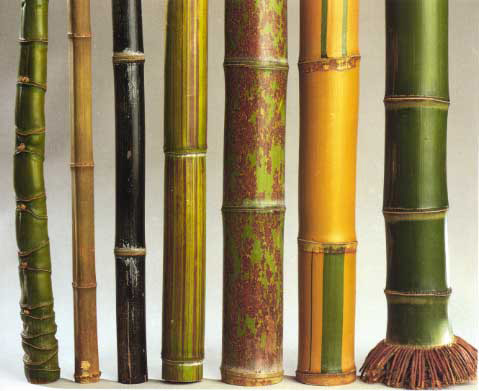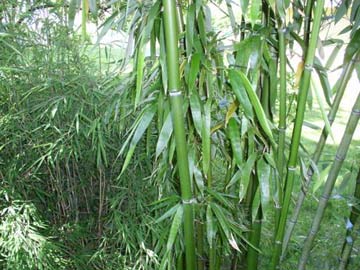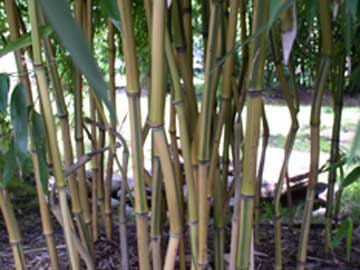Bamboo has gotten a bad rap as an invasive species of plants. We prefer to call its growth “prolific”. Like anything else, it will thrive in certain conditions and won’t do well in others. There are two types of bamboo: running and clumping (leptomorph and pachymorph). There are more than 2,400 different species of bamboo, approximately 60 of which will grow in the Northeast (zone 6). Within this group are several distinct families: Phyllostachys, Fargesia, Pleioblastus, Arundinaria, Sasa, Bambusa, Semiarudinaria, Sinobambusa, Thamnocalamus, Indocalamus, Psuedosasa, Shibataea, Sasaella and Yushania

Bamboo culms: Reprinted from Bamboos, Recht & Wetterwald,
Timber Press, Swavesey, Cambridge, UK 2000 Page 33.
Unless you are a collector, you needn’t get bogged down in all that stuff. What you need to know, however, is the application, i.e. what do you want the bamboo to do for you? Most likely, the answer falls into two categories: ornamental or privacy hedges. For ornamentals, there is a style and color for any individual taste.
If you’re considering privacy hedges, there are other considerations. You will want a running variety most likely in the Phyllostachys or Psuedosasa family. Why? These bamboos are the most cold hardy, they will grow in heavy shade, will reach heights of 36ft., are evergreen and are deer-resistant. If you live near the ocean or in areas where wind is a concern, Psuedosasas are a better bet.

P. angusta (Stone bamboo) with Fargesia nitida
in the background.
Many of Bamboo Bob’s clients are looking to screen out something they would rather not see. For this capacity we tend to recommend P. aureosulcata (Yellow Groove), P. nuda, P. bissettii or P. vivax (the P. stands for Phyllostachys). Of these three, Yellow Groove, bissettii and nuda are the top contenders because they grow to a max. height of about 36ft. and tolerate temperatures between 20-30 degrees below zero (Fahrenheit). Bamboo will grow in most types of soil provided it is well drained. However, Bamboo WILL NOT GROW in clay, shale or mud (unless you take certain steps).

P. aureasulcata spectablis.